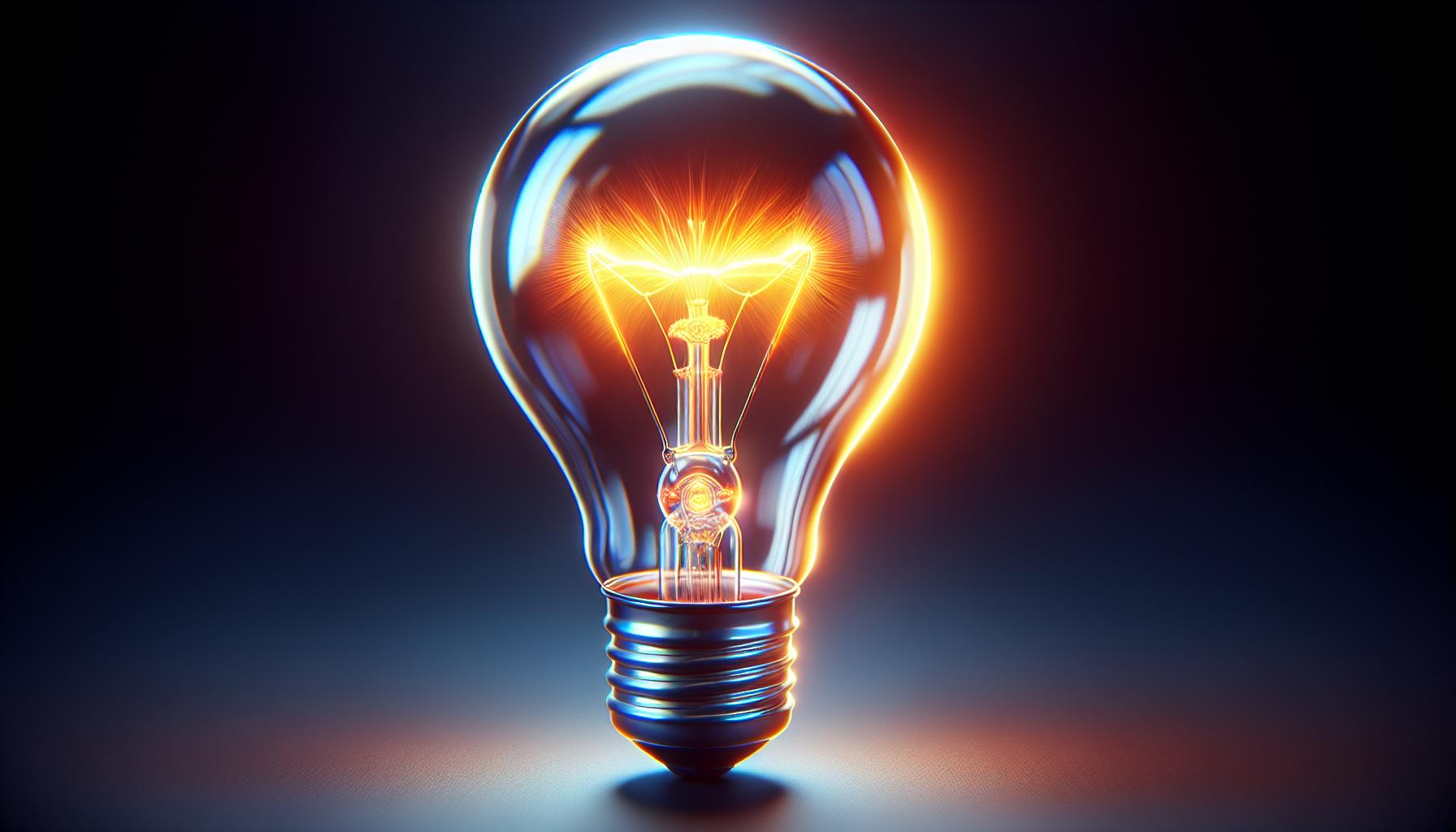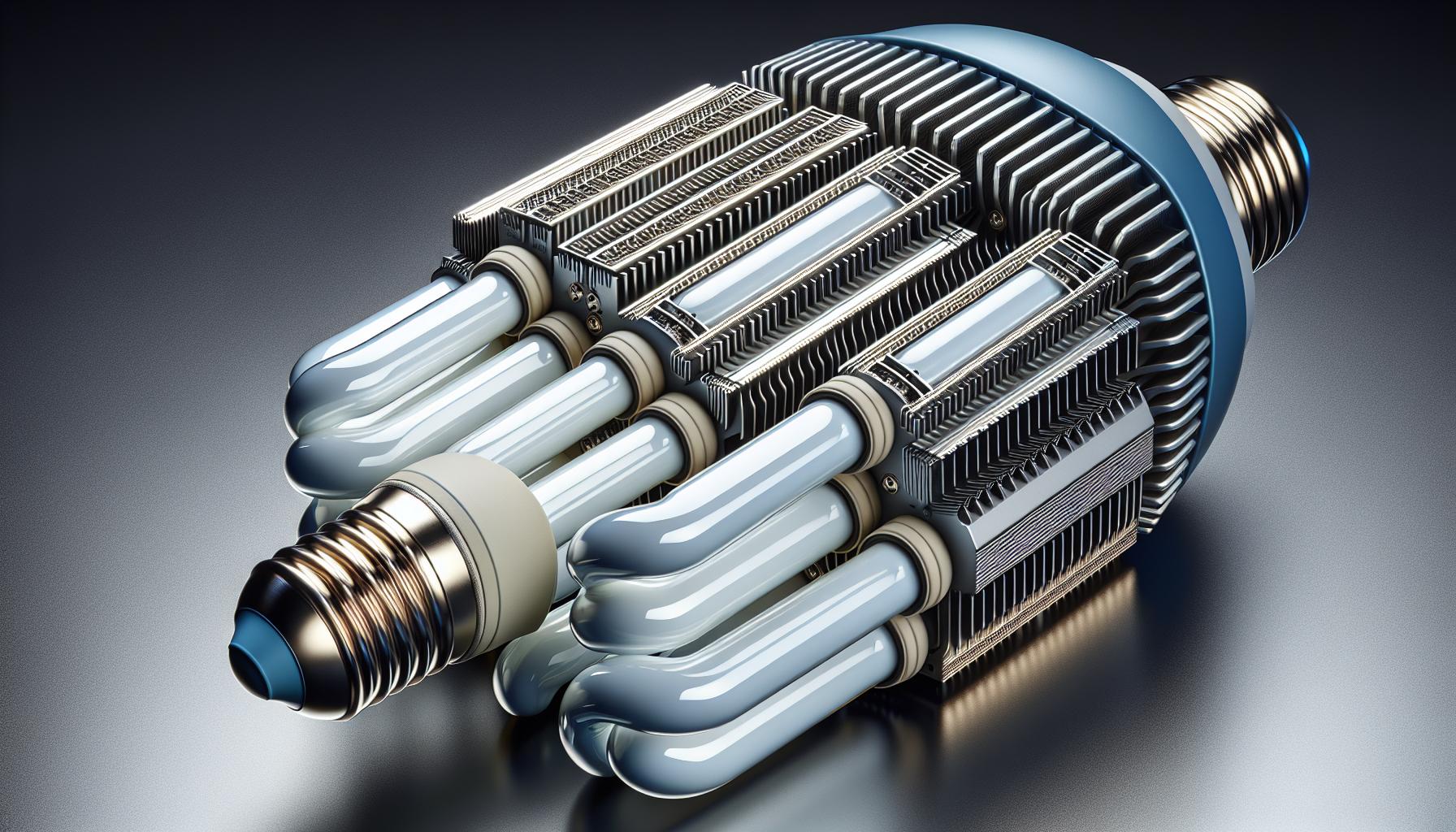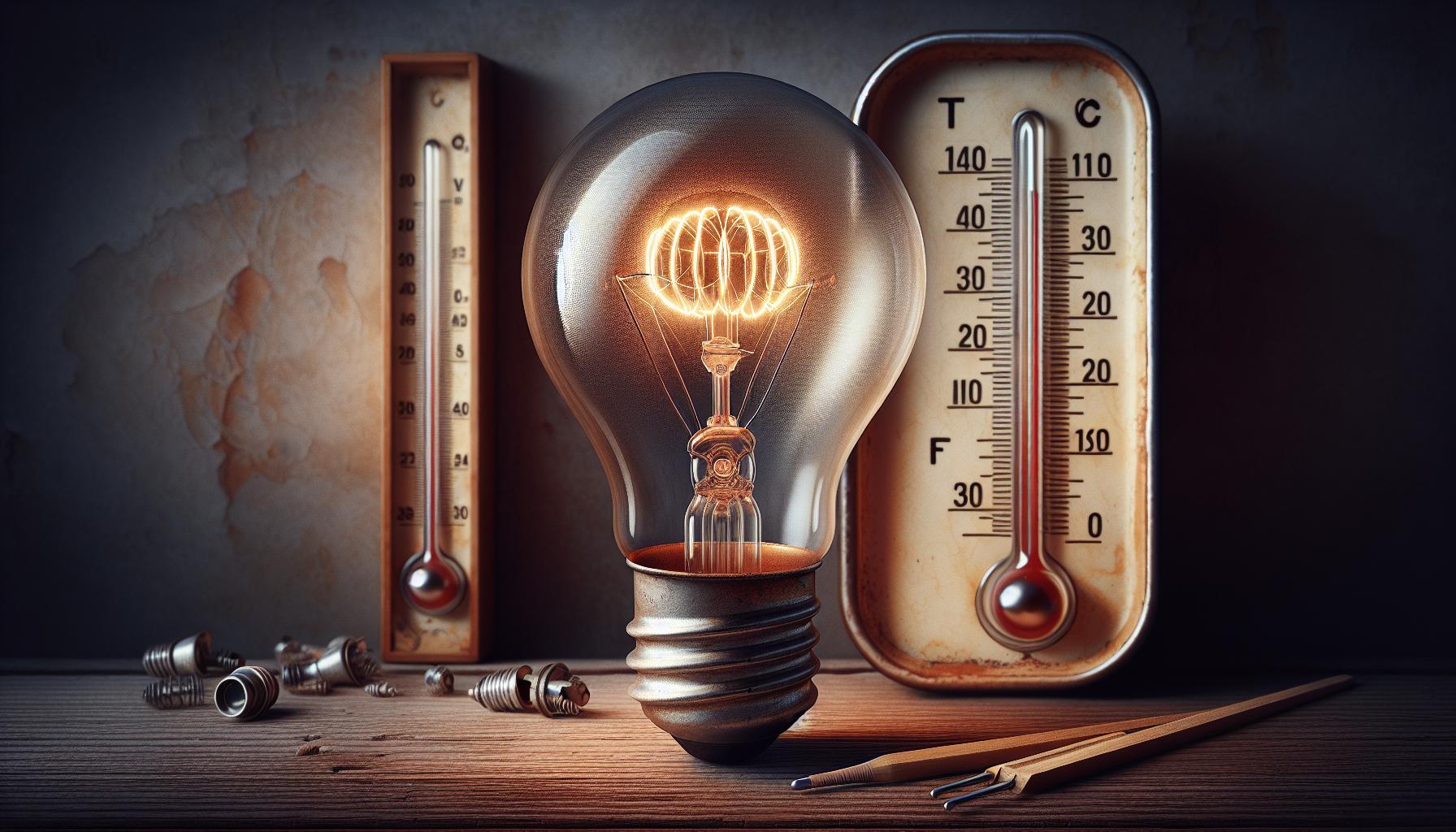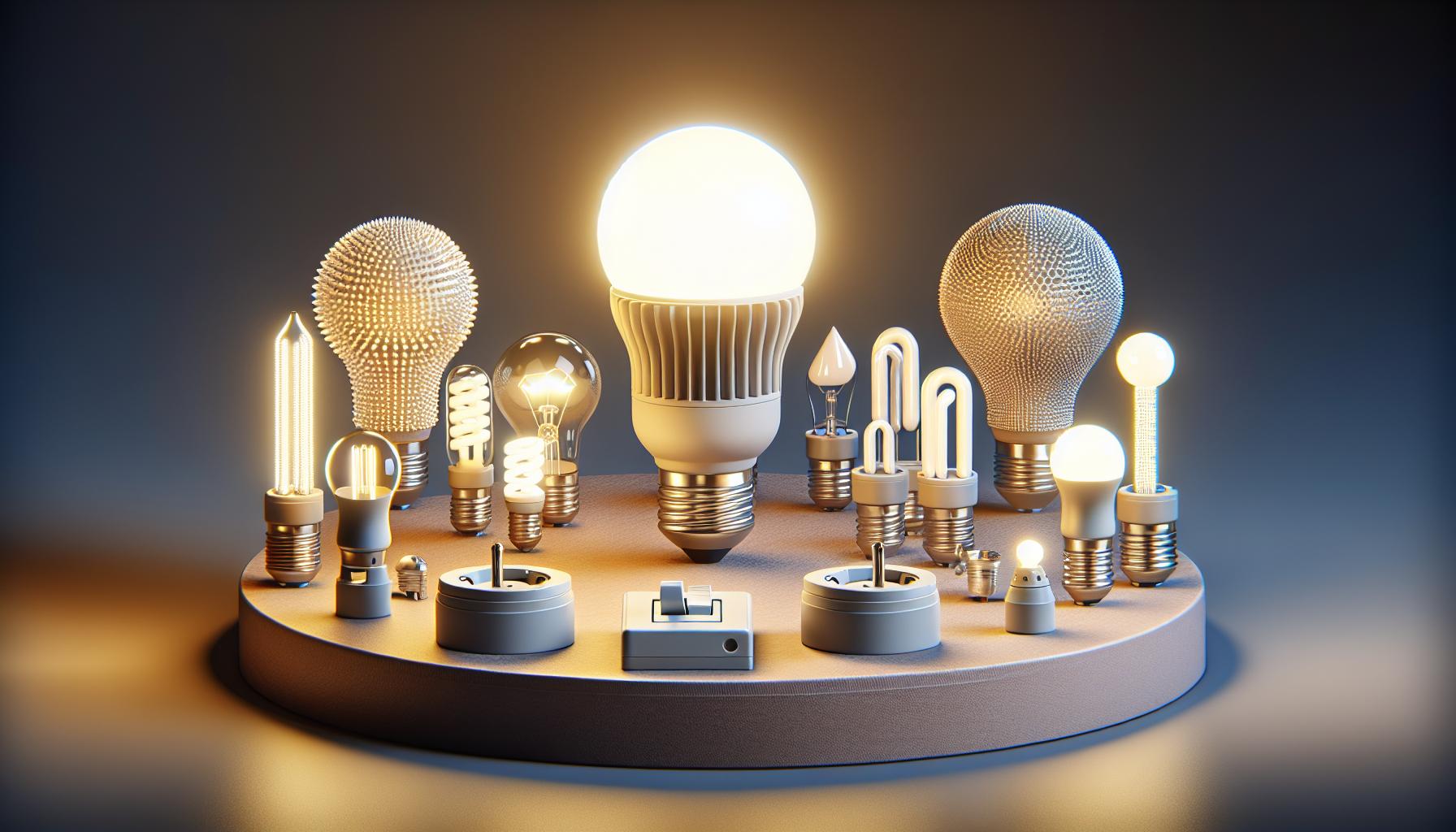Ever reached up to change a light bulb and reeled back from the unexpected heat? You’re not alone. It’s a common question that puzzles many—why do light bulbs get so hot?
Traditional bulbs, like the incandescent ones you may still have around, turn more energy into heat than light. That’s why they can feel like tiny ovens. But if you’ve switched to newer types and still find your bulbs unusually warm, there might be more to the story.
Understanding the heat behind the light is not just about solving a mystery—it’s about safety and efficiency in your home. Let’s shed some light on the hot topic of bulbs and their toasty tendencies.
The Science of Light Bulbs
Diving into the world of light bulbs, you’ll discover it’s all about energy conversion. At their core, light bulbs are devices that convert electrical energy into light—and in the case of incandescent bulbs, a significant amount of heat.
Incandescent light bulbs work through a process called resistive heating. When you flick that switch, electrical current flows through the bulb’s thin filament. Made of tungsten, this filament offers resistance to the current, causing it to heat up to a temperature where it glows, emitting light.
But why so much heat? Simple physics: the filament has to be extremely hot to produce light, and in the process, more than 90% of the energy it uses is transformed into heat. The warmth you feel when you touch a lit bulb is essentially wasted energy. Check the numbers below:
| Energy Used | Light | Heat |
|---|---|---|
| Incandescent | <10% | >90% |
Besides incandescent, there are compact fluorescent lamps (CFLs) and light-emitting diodes (LEDs). CFLs work a bit differently. They contain a gas that produces ultraviolet light when excited by electricity. This UV light then interacts with a fluorescent coating inside the bulb to produce visible light. While more efficient than incandescent bulbs, CFLs still produce some heat, generally less than their predecessors.
LEDs, on the other hand, are the cool kids on the block. They use semiconductor technology to emit light without generating much heat at all. It’s why you’re seeing more LED options in the home DIY and lighting aisles. They offer a cool touch with enhanced efficiency.
Incandescent Bulbs: The Heat Machines
You’re standing in the aisle staring at rows of light bulbs, and you reach for the familiar incandescent bulb. It’s the same type that’s been brightening homes for over a century, but as you screw it into your lamp at home, you’re quickly reminded of an important caveat: these bulbs get incredibly hot.
As a DIY enthusiast, you might wonder why these bulbs haven’t evolved past their sauna-like tendencies. Well, it all boils down to how they work. Incandescents create light by sending an electrical current through a thin wire called a filament. The filament, usually made of tungsten, resists the electric flow, heating up until it glows with that warm, yellowish light you’re used to. Unfortunately, only about 10% of that energy becomes light; the rest is lost as heat.
Remember, back in the day, this technology was groundbreaking. Yet, with an efficiency that low, today’s energy-conscious world sees them more like Heat Machines than light sources. Here’s a quick snapshot of their efficiency compared to more modern bulbs:
| Bulb Type | Efficiency |
|---|---|
| Incandescent | ~10% |
| Compact Fluorescent (CFL) | ~40% |
| Light Emitting Diode (LED) | ~80% |
In the realm of your home projects, considering the amount of heat these bulbs emit is crucial, especially if you’re working in small, enclosed spaces or designing a lighting set-up. That heat can affect everything from your room’s temperature to how often you’ll be climbing up a ladder to replace a burnt-out bulb.
Space limitations around light fixtures are also something you should account for. Manufacturers usually recommend a certain distance between the bulb and any flammable materials. Not adhering to these recommendations can transform your cozy living room into a hazard zone.
« Why Is a Light Bulb Not an Ohmic Resistor? Uncover the Surprising Truth
Why Are Light Bulbs Better than Candles? Discover the Bright Advantages »
So next time you’re looking for that warm glow, you might consider whether the extra heat is something you can handle in your space. Perhaps it’s worth exploring the cooler, more efficient CFLs and LEDs that could save you time, money, and a dose of unnecessary heat. After all, lighting your home shouldn’t feel like you’re lighting a fire.
Newer Bulbs: Are They Supposed to Be Hot?
When you’re knee-deep in a home DIY project, you may find yourself pondering over the warmth emitted by newer bulbs. It’s not unusual to question if they’re supposed to get hot, knowing full well the excessive heat production of their incandescent predecessors.
Compact Fluorescent Lamps (CFLs) are designed with energy efficiency in mind. They operate cooler than traditional incandescent bulbs but can still feel warm to the touch. The warmth is due to their mechanism of driving electric current through a tube containing argon and a small amount of mercury vapor. This generates invisible ultraviolet light that excites a fluorescent coating on the inside of the tube to produce visible light.
Light-Emitting Diodes (LEDs), on the other hand, are the cool kids on the block. They are known for their impressive energy efficiency and low heat output. The light from an LED is generated through semiconductors that convert electricity into light, a process that produces very little heat. However, some heat is inevitable and is typically managed through heat sinks that draw the warmth away from the LEDs.
Is the Heat from Newer Bulbs a Concern?
You’re right to pay attention to the heat emanating from your bulbs, especially when completing a lighting project where materials and fixture placements are crucial. While less of a hazard, the heat from CFLs and LEDs can still affect the fixture and surroundings over time.
- CFLs: Can warm up surrounding air slightly which should be considered when installing in confined spaces.
- LEDs: May still get warm at the base, especially if the heat sink is not effectively drawing heat away.
Understanding the heat characteristics of each bulb type can ensure that you’re choosing the right one for your needs. It’s about balancing illumination with energy consumption and safety, ensuring your DIY projects shine in the best light.
Common Causes of Overheating Bulbs
Have you touched a bulb only to pull back your hand at the unexpected heat? It’s a clear sign that your bulb is running hot, but what’s behind this temperature spike? Let’s shed some light on the usual suspects causing your light bulb to feel like it just ran a marathon.
Firstly, Voltage Fluctuations can be a real issue. Light bulbs are designed to operate within a specific voltage range. If your home’s voltage supply exceeds this range, the bulb’s filament gets stressed, leading to overheating. It’s a bit like pushing a car engine beyond its limits—you’re calling for trouble.
Then there’s the Wattage War. Ever screwed a high-wattage bulb into a fixture designed for lower wattage? That’s practically an invitation for overheating. The fixture can’t handle the power, generating excess heat. It’s as if you’re asking a sprinter to pull a truck—it just isn’t going to end well.
Poor Fixture Design also plays a part. Some fixtures are more akin to winter coats than summer tees, trapping heat around the bulb. Good airflow is crucial in keeping a bulb cool, so if your fixture is stifling your bulb, consider switching to a more open style.
Let’s not forget about Dust and Debris. Over time, the accumulation of dust can also insulate the bulb, retaining heat. Keeping bulbs clean is akin to dusting off a fan—it ensures better airflow and cooler operation.
What about Long Operating Times? Bulbs, like anything else, get hotter the longer they’re on. It’s simple science—the longer the bulb is working, the more heat it generates. Think about how you feel after a long day—you’re pretty warmed up, right?
Dimming Features may also contribute to the heat. Some bulbs, when paired with incompatible dimmers, can run hotter than usual. Imagine trying to run calmly while being intermittently shouted at to sprint—it throws off your rhythm and causes stress.
Finally, Environment can affect your bulb’s temperature. A hot room is like a hot day at the beach for your bulb—it’s going to be warmer, regardless of what it wants.
Tips for Dealing with Hot Bulbs
When you’re dealing with bulbs that seem to be overheating, there are a few tricks you can use to mitigate the issue and keep your home safe.
Switch to LED Bulbs
LED bulbs are known for their efficiency. They’re designed to emit less heat, so switching can be a quick fix if you’ve been using incandescent or halogen lightbulbs.
Check for Dimmer Compatibility
If you’re using dimmers, make sure that your light bulbs are compatible. Some dimmers can cause non-compatible bulbs to overheat, so it’s best to use bulbs specifically designed for dimming.
Lower the Wattage
If the fixture allows, opt for a bulb with lower wattage. Not only does this reduce heat, but it also conserves energy.
Understand Your Fixtures
Some light fixtures are designed in such a way that they can trap heat. If that’s the case, consider switching to fixtures with better ventilation.
Regular Maintenance
Regularly wipe down bulbs and fixtures to prevent dust accumulation, which can insulate heat. Plus, a clean bulb is a more efficient one.
Reduce Usage
Make a habit of turning lights off in unoccupied rooms. This simple step can prolong the life of your bulbs and reduce the heat they produce when not needed.
Remember, it’s not just about what kind of bulb you use, but how you use it. Your choices can have a significant impact on heat production and overall bulb performance. Keep experimenting with the above tips until you find the perfect balance for your lighting needs.
Conclusion
You’ve got the tips to tackle that too-hot light bulb and keep your space safely lit. Remember, it’s not just the bulb type—it’s how you use it. So go ahead, give those LEDs a shot, double-check your dimmers, and maybe step down a wattage or two. Keep an eye on those fixtures and don’t forget a little maintenance now and then. And hey, if you can cut down on usage, that’s not just cool for your bulbs, it’s great for your energy bill too. Stay bright and safe!
Frequently Asked Questions
What can I do to prevent light bulbs from overheating?
Switch to LED bulbs, which emit less heat, use bulbs with the correct wattage for your fixture, and ensure that dimmer switches are compatible with the bulbs you’re using.
Are LED bulbs less prone to overheating?
Yes, LED bulbs emit less heat compared to traditional incandescent bulbs, making them a safer and more energy-efficient choice.
How does using lower wattage bulbs help?
Using bulbs with lower wattage than the maximum supported by your fixture can reduce the amount of heat produced, minimizing the risk of overheating.
Why is understanding fixture design important?
Different fixtures are designed to handle specific types of bulbs and heat levels. Knowing the design and limitations of your light fixture can help you choose the right bulb to prevent overheating.
How often should I perform maintenance on my light fixtures?
Regular maintenance, including cleaning and checking for wiring issues, should be carried out to ensure your fixtures and bulbs are operating safely and not at risk of overheating.
Can reducing light bulb usage diminish overheating risks?
Yes, using light bulbs less frequently or for shorter periods can help prevent overheating, especially in fixtures that are prone to heat accumulation.
Remember, it’s essential to consider not only the type of bulb but also how you use it in order to effectively manage the heat output of your lighting.





